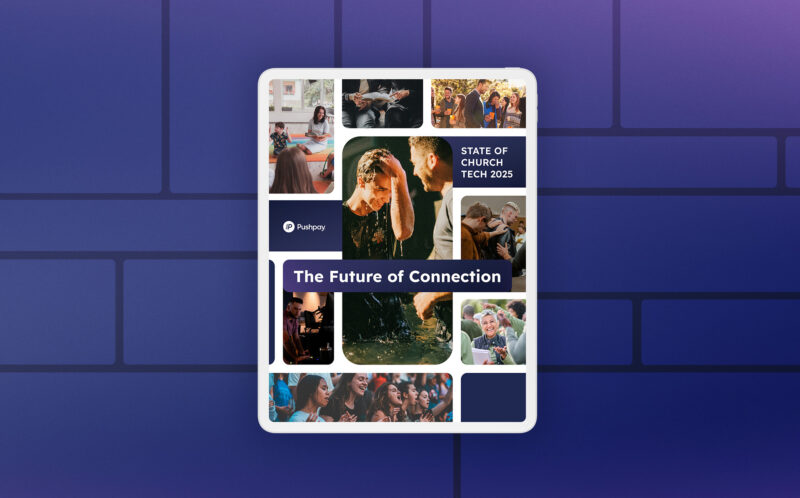
What Billy Graham’s Ministry Teaches Us about Technology
Billy Graham may have been the greatest evangelist since Charles Spurgeon, but the church can also learn from him as an innovator of technology in ministry.
As the world comes to grips with the loss of arguably the greatest evangelist since Charles Spurgeon, you’ll read lots about Billy Graham in the coming days.
And that’s good. Soak it all in.
Read about all the people who came to faith in Christ through Graham’s ministry. Read about the times he comforted the nation during great tragedies. Read about his meetings with presidents and prime ministers.
But don’t miss the story of Graham and technology. In fact, you really can’t tell the story of Graham’s impact on the world without talking about technology.
The Radio Appearance that Launched a Global Ministry
Last week, Pushpay co-founder Chris Heaslip shared some of that story in his keynote message at Summit 2018. Heaslip began his message by describing a despondent Graham after three weeks of barely-adequate crowds during his famed Los Angeles crusade of 1949.
One night, as Graham showed up at the venue, he noticed a swarm of people. He turned to one of the reporters and asked, “What’s going on?”
The reporter told him a radio appearance of his had been covered in a local paper and started a flood of publicity. During the next eight weeks, 350,000 people attended those meetings.
Though Graham had been ordained a decade earlier, it was that Los Angeles crusade that launched his global ministry. And the most important communications technology in history at that point, radio, played a key role.
The Birth of Television Preaching
As his ministry grew in the 1950s, Graham looked for ways to get the message out to more and more people. In the opening service of his 1957 New York City crusade, Graham preached to over 18,000 people. But that wasn’t enough. If there was any way he could get the gospel out to more people, Graham wanted to do it.
On June 1, 1957, the Billy Graham Evangelistic Association broadcast the New York City crusade on ABC. More than 96 million people switched on their televisions to tune in. The BGEA began to broadcast Graham’s sermons on a regular basis.
Put this into perspective. Today, televised preaching is hardly controversial. But in 1957, it was innovative. Other preachers had been on television, but nothing at Graham’s scale.
Graham ushered in a whole new way to get the gospel message out.
In following decades, Graham’s ministry would use satellite technology to open even more doors for proclaiming the gospel to all people.
Proclaiming the Gospel by All Means
Graham took to heart Paul’s admonition in 1 Corinthians 9:22 to reach out with the gospel “by all means.” But Graham didn’t stop with television. A year earlier, before the televised New York City crusade, Graham founded the evangelical news magazine Christianity Today. In 1960, he started Decision Magazine, which now reaches more than 400,000 people.
When the internet revolution came in the 1990s, Graham leaned into the web to amplify the gospel message, launching the billygraham.org website in 1996. Since then, more than 4 million people have come to faith in Christ through this website.
In 1995, Graham broadcast one message from Puerto Rico live in 48 languages around the world.
Some say his series “Global Mission” was heard by more than one billion people.
“Billy understood one key thing: People feel wanted when we engage them through technology and culture,” Heaslip told church leaders at the Summit.
You don’t think about Billy Graham when you ponder technology, but it’s really hard to imagine the breathtaking impact of his ministry without it. While many church leaders reflexively pushed back against technology, fearful of its potential for evil, Graham saw the potential in it for gospel proclamation.
“I am amazed at the wonders of technology and am grateful for the ways in which we are able to use it to share the gospel around the world,” he once said.
Technology’s Limitations
But Graham also understood technology’s limitations.
Twenty years ago, in the early days of the digital revolution, TED invited Graham to give what has become an iconic speech about the role of faith in technology. He left talk about microchips and processors to the technologists in the room. Instead, Graham did what Graham does.
He preached the gospel. It became one of the most memorable TED talks of all time. He reminded the technology leaders in the room that as powerful as technology would be in the coming years, decades, and centuries, it couldn’t cure what truly ails the human soul.
“The Bible says the problem is within us, within our hearts and our souls,” Graham told those listening to his TED talk. “Our problem is that we are separated from our Creator, which we call God, and we need to have our souls restored, something only God can do.”
Graham never forfeited an opportunity to share the gospel, even if that opportunity arose amidst a growing secular culture.
Thank You, Billy Graham
We have much to thank Billy Graham for today—for all the people who heard and responded to the gospel through his ministry, for a lifetime of modeling integrity and faithfulness in ministry, and for his influence on some of the most powerful people on the planet (and some of the most common) with the gospel.
But let’s also be thankful he cared about the gospel message enough to use all means necessary to share it. Graham’s model of innovation should be an inspiration as the church marches into the future. Graham said:
“I see no contradiction between the old, old story and the newest means to transmit it. It is time for the church to use the technology to make a statement that in the midst of chaos, emptiness, and despair, there is hope in the person of Jesus Christ.”
Thanks to Billy, millions were reached with the message of the gospel. And for that, we are grateful.






